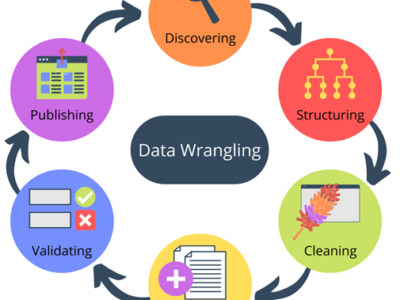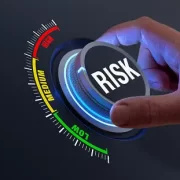
Introduction: Debt can feel like a heavy burden, casting a shadow over financial stability and peace of mind. However, How to remove debt with determination, discipline, and the right strategies, it’s possible to break free from the shackles of debt and pave the way to a brighter financial future. In this comprehensive guide, we’ll explore practical steps and effective strategies for removing debt, empowering you to take control of your finances and achieve lasting debt relief.
- Assess Your Debt Situation: The first step in removing debt is to assess your current financial situation. Take stock of all your debts, including credit card balances, loans, medical bills, and any other outstanding obligations. Record the total amount owed for each debt, along with the interest rates and minimum monthly payments.
- Create a Budget: Developing a realistic budget is essential for managing expenses and prioritizing debt repayment. Start by listing all sources of income and categorizing your expenses, including necessities like housing, utilities, food, and transportation, as well as discretionary spending. Identify areas where you can cut costs and allocate more funds towards debt repayment.
- Prioritize Your Debts: Not all debts are created equal, and it’s important to prioritize repayment based on factors such as interest rates, outstanding balances, and creditor terms. Consider utilizing the debt snowball or debt avalanche method to tackle debts systematically. With the debt snowball method, you focus on paying off the smallest debt first, then move on to the next smallest debt, gaining momentum as you go. With the debt avalanche method, you prioritize debts with the highest interest rates, potentially saving more money on interest over time.
- Negotiate with Creditors: Don’t hesitate to reach out to your creditors to explore options for debt relief. In some cases, creditors may be willing to negotiate reduced interest rates, waive fees, or offer hardship programs to help you repay your debts more affordably. Be proactive and open about your financial situation, and don’t be afraid to ask for assistance.
- Explore Debt Consolidation: Consolidating multiple debts into a single loan with a lower interest rate can simplify repayment and potentially reduce overall interest costs. Consider options such as balance transfer credit cards, debt consolidation loans, or home equity loans to consolidate high-interest debts into a more manageable single payment.
- Increase Your Income: Boosting your income can accelerate debt repayment and provide additional financial flexibility. Explore opportunities for side gigs, freelancing, or part-time work to supplement your primary income. Use any extra income to make larger payments towards your debts, helping you pay them off more quickly.
- Stay Committed and Motivated: Removing debt requires discipline and perseverance, especially when faced with setbacks or unexpected expenses. Stay committed to your debt repayment plan, and celebrate small victories along the way. Set achievable milestones and reward yourself for reaching them, whether it’s with a small treat or a moment of relaxation.
Conclusion: Removing debt is a journey that requires dedication, patience, and strategic planning. By assessing your debt situation, creating a budget, prioritizing debts, negotiating with creditors, exploring debt consolidation, increasing your income, and staying committed to your goals, you can take control of your finances and achieve lasting debt relief. Remember, the path to financial freedom may be challenging, but with perseverance and determination, you can break free from the cycle of debt and build a more secure future for yourself and your loved ones.
Introduction: Debt can feel like a heavy burden, casting a shadow over financial stability and peace of mind. However, with determination, discipline, and the right strategies, it’s possible to break free from the shackles of debt and pave the way to a brighter financial future. In this comprehensive guide, we’ll explore practical steps and effective strategies for removing debt, empowering you to take control of your finances and achieve lasting debt relief.
- Assess Your Debt Situation: The first step in removing debt is to assess your current financial situation. Take stock of all your debts, including credit card balances, loans, medical bills, and any other outstanding obligations. Record the total amount owed for each debt, along with the interest rates and minimum monthly payments.
- Create a Budget: Developing a realistic budget is essential for managing expenses and prioritizing debt repayment. Start by listing all sources of income and categorizing your expenses, including necessities like housing, utilities, food, and transportation, as well as discretionary spending. Identify areas where you can cut costs and allocate more funds towards debt repayment.
- Prioritize Your Debts: Not all debts are created equal, and it’s important to prioritize repayment based on factors such as interest rates, outstanding balances, and creditor terms. Consider utilizing the debt snowball or debt avalanche method to tackle debts systematically. With the debt snowball method, you focus on paying off the smallest debt first, then move on to the next smallest debt, gaining momentum as you go. With the debt avalanche method, you prioritize debts with the highest interest rates, potentially saving more money on interest over time.
- Negotiate with Creditors: Don’t hesitate to reach out to your creditors to explore options for debt relief. In some cases, creditors may be willing to negotiate reduced interest rates, waive fees, or offer hardship programs to help you repay your debts more affordably. Be proactive and open about your financial situation, and don’t be afraid to ask for assistance.
- Explore Debt Consolidation: Consolidating multiple debts into a single loan with a lower interest rate can simplify repayment and potentially reduce overall interest costs. Consider options such as balance transfer credit cards, debt consolidation loans, or home equity loans to consolidate high-interest debts into a more manageable single payment.
- Increase Your Income: Boosting your income can accelerate debt repayment and provide additional financial flexibility. Explore opportunities for side gigs, freelancing, or part-time work to supplement your primary income. Use any extra income to make larger payments towards your debts, helping you pay them off more quickly.
- Stay Committed and Motivated: Removing debt requires discipline and perseverance, especially when faced with setbacks or unexpected expenses. Stay committed to your debt repayment plan, and celebrate small victories along the way. Set achievable milestones and reward yourself for reaching them, whether it’s with a small treat or a moment of relaxation.
Conclusion: Removing debt is a journey that requires dedication, patience, and strategic planning. By assessing your debt situation, creating a budget, prioritizing debts, negotiating with creditors, exploring debt consolidation, increasing your income, and staying committed to your goals, you can take control of your finances and achieve lasting debt relief. Remember, the path to financial freedom may be challenging, but with perseverance and determination, you can break free from the cycle of debt and build a more secure future for yourself and your loved ones.











